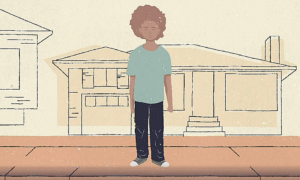 In 2015, for the third year in a row, the number of children taken from their parents, and the number of children trapped in foster care on any given day, increased. Odds are the story will be the same for 2016.
In 2015, for the third year in a row, the number of children taken from their parents, and the number of children trapped in foster care on any given day, increased. Odds are the story will be the same for 2016.
With the release of the figures, the Great Child Welfare Excuse Machine cranked into high gear. While in some states officials were honest enough to admit that the increase was driven in part by foster-care panics — sharp spikes in removals of children in the wake of high-profile tragedies — almost everyone said, in effect, what do you expect? It’s because of drug addiction.
That’s probably what officials at the Arkansas Department of Human Services and its Division of Children and Family Services (DCFS) were hoping to hear when they hired Hornby Zeller Associates to find out why the foster care population in the state had been skyrocketing. They probably also hoped HZA would recommend spending lots more money to hire lots more caseworkers. Then, with a prestigious consultant’s report in hand, they could try to persuade a conservative legislature to hand over the money.
So the actual report must have been quite a shock. Indeed, the report was so disappointing that DCFS tried to hide it. The Arkansas Times, an alternative weekly that has been doing outstanding reporting on child welfare, had to file a Freedom of Information Act request to get it.
And no wonder. HZA found the heart of the problem is not a new drug plague or a big increase in actual child abuse of any kind. Rather, the primary cause is “questionable removals” of children who probably could have remained safely in their own homes had their families gotten the right kinds of help.
HZA reviewed a random sample of 400 care records. Based on that review, HZA found that 22 percent of the removals probably were unnecessary.
That’s almost certainly an underestimate. A case record is how a child welfare agency justifies its decisions. It’s only the agency’s side of the story. So the HZA findings are like a criminal justice system in which juries acquit the accused 22 percent of the time — after hearing only the prosecution’s case.
Findings from the case reading are confirmed by frontline workers. They repeatedly complain about colleagues who are too quick to tear apart families. According to the report:
[Related: How to Reduce the Use of Chemical Restraints on Foster Children]
“The majority of caseworkers recalled multiple instances in which they did not believe the challenges facing the family warranted the child’s removal. A caseworker summed up the consensus when she said ‘We get all these kids assigned to us and we wonder why they were removed to begin with.’”
It happens in part because DCFS created incentives for family destruction. In several counties DCFS created specialized units whose sole job was investigating allegations. Some of them got carried away with their own rescue fantasies, oblivious to the harm foster care would do to the children they “rescued.”
There also is a more practical incentive: If the investigative workers opt to keep a family together, they retain responsibility for monitoring the family and providing services. If they take away the child, the case immediately becomes someone else’s responsibility.
In other cases, DCFS wanted to keep families together but judges were so fanatical about taking away children that the agency engaged in pre-emptive capitulation. One area director told HZA: “I might approve a removal for one county and then ten minutes later not approve a removal for the same [conditions] in another county because of who the judge is.”
Given these findings, it’s not surprising that HZA specifically rejected the just-give-us-more-money-and-everything-will-be-fine approach.
“If all of the removals are necessary, the only thing DCFS can do is increase the resources it needs to handle the additional workload,” the HZA report says. But “If a substantial number of the decisions are inappropriate, a different set of solutions is required.”
HZA offered seven specific recommendations for reform — including suggesting that DCFS grow a backbone when the agency goes to court.
And what did DCFS do? It ignored every one of the recommendations, tried to hide the HZA report itself and issued a report of its own that makes a token nod toward more “prevention” but deals mostly with recruiting more foster parents. And of course, they want a caseworker hiring binge; in other words, exactly what the agency would have said had it never hired a consultant in the first place.
As for the other states with skyrocketing foster care populations, there is nothing to suggest that the culture in their child welfare systems is any better than the culture in Arkansas. Many of them take away, proportionately, even more children.
And yes, addiction is a big part of the problem — but not the kind of addiction people in child welfare want to talk about. The problem is child welfare agencies addicted to foster care as the only answer to family problems.
Richard Wexler is executive director of the National Coalition for Child Protection Reform.
More related articles:
A Troubled Life of Truancy, Drugs Leads to Foster Care, Early Death
Alaska’s Unreasonable Assault on ‘Reasonable Efforts’
Man Still Fighting 40-year Sentence for Nonlethal Crime He Committed As 14-year-old































